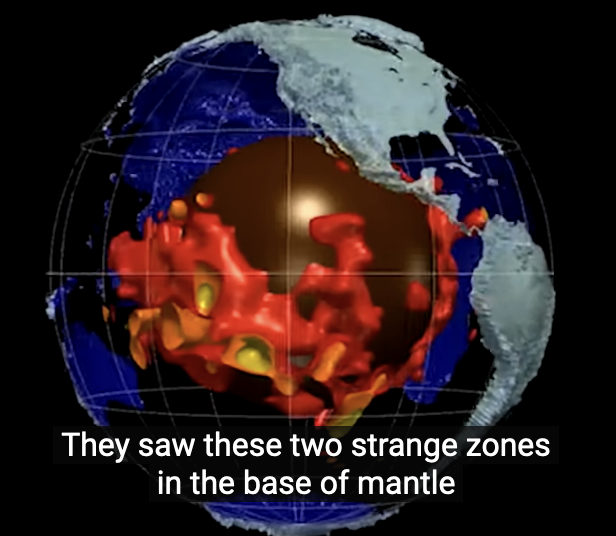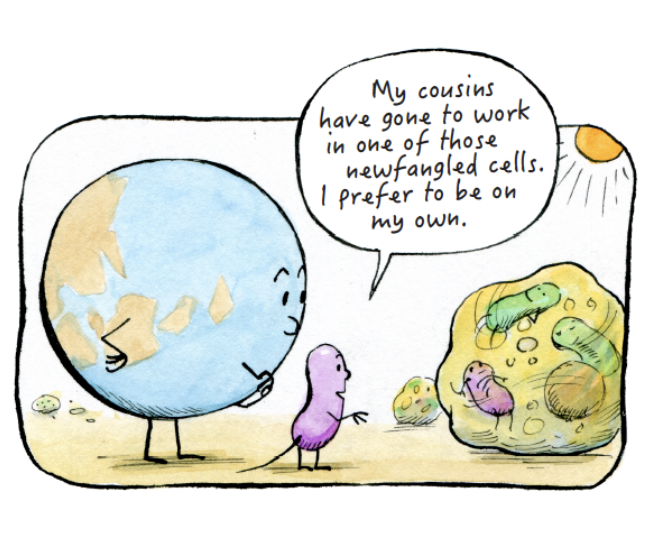News Bites March 2024
Beautiful News Daily
Tired of the focus on bad news in the media? Seemingly, the more spectacular the better. The Beautiful News Daily takes the alternative approach of emphasizing constructive events and achievements. Some  interesting samples include:
interesting samples include:
- Over 100 cities now get at least 70% of their energy from renewables, with South America containing 57% of those cities and Africa coming in second. Sadly, Australia does not get a mention.
- Eight countries have 100% renewable energy, and Bhutan is the first country to become carbon negative.
- Britain’s woodland cover has returned to medieval levels (click on the image).
- 70 Countries have legalised animal protection – with actions ranging from criminalising animal cruelty, to recognising sentience, and to enshrining animal dignity in their constitution.
Check out Beautiful News Daily, but be warned – it is highly addictive!
When did Life First Appear?
 Answering this question first requires a definition of ‘life’. For example in our world viruses are capable of reproduction, but are they alive? Over 200 scientific publications have attempted to address this question alone.
Answering this question first requires a definition of ‘life’. For example in our world viruses are capable of reproduction, but are they alive? Over 200 scientific publications have attempted to address this question alone.
Defining any organism capable of undergoing Darwinian evolution simplifies the problem here in earth, but things get really weird when the universe before our solar system is considered.
Darwinian life probably first appeared on earth around 4 b years ago but there has been no firm evidence of similar life appearing elsewhere in the universe. Does it not exist, or are our observing systems not yet up to the task? Or are there Darwinian life forms out there that are not based on our carbon-based and DNA controlled life forms here on earth?
That thought process leads one down some pretty exotic paths, such as ‘shadow life’ in the dark matter that compromises 80% of the universe’s mass, or life forms that appeared and died in the millisecond after the Big Bang.
Interested? Check out the essay here. Cartoon from here.
Snakes, Our Rapid Evolutionists
When faced with a new, or evolving environment, snakes have an internal evolutionary clock that enables them to adapt rapidly into the new niches that appear – much more rapidly than their genetic neighbours, the lizards.

Historically, this ability has generated three diversity explosions: one after snakes first appeared 128 mya; another during the dinosaur era; and yet another after the dinosaur extinction event. This ability remains, with snakes evolving rapidly to modern environmental changes (yes, even the woodpile and toolshed).
As a result there are now over 4,000 species of snakes that are found in nearly every environment: land, marine, soil, trees… They can slither across sand, though thick scrub, and through soil – they swim, and even fly.
This ability also provides snakes with environmental engineer status, as their rapid evolution impacts the evolution of other species into new or rapidly changing environments.
Interested? Read more here.
Earth’s Captive Planet?

Down deep in the earth a strange area of rock surrounds our liquid core.
How did it get there? One theory (see the June 2023 Newsletter) is that the deep-ocean bed was subducted down as continental masses floated around.
Now another possibility has emerged – the collision between Earth and another, smaller planet that produced the moon may have resulted in a part of that planet being captured to form the deep layer.
Interested? Check out the video here.
Glyphosate’s Waning Effectiveness
 A recent study has demonstrated the declining effectiveness of Glyphosate for weed control. Initial ~100% effectiveness had declined substantially within a decade – by up to over 30%. The effectiveness continues to decline today.
A recent study has demonstrated the declining effectiveness of Glyphosate for weed control. Initial ~100% effectiveness had declined substantially within a decade – by up to over 30%. The effectiveness continues to decline today.
What went wrong?
Faced with the universal, massive applications of glyphosate, many weeds simply adapted. The few that survived in one year, grew in dominance, and further selection led towards even higher glyphosate resistance. To quote one of the authors of the scientific study:
“Let’s imagine a company says they have the next silver bullet. It’s going to enjoy a huge market share almost instantaneously. But it needs to come with a stewardship plan to better preserve that chemistry over time,” he said. “Why would we think nature would behave any differently? It won’t.”
With thanks to Marnie Fitzsimons for the pointer.